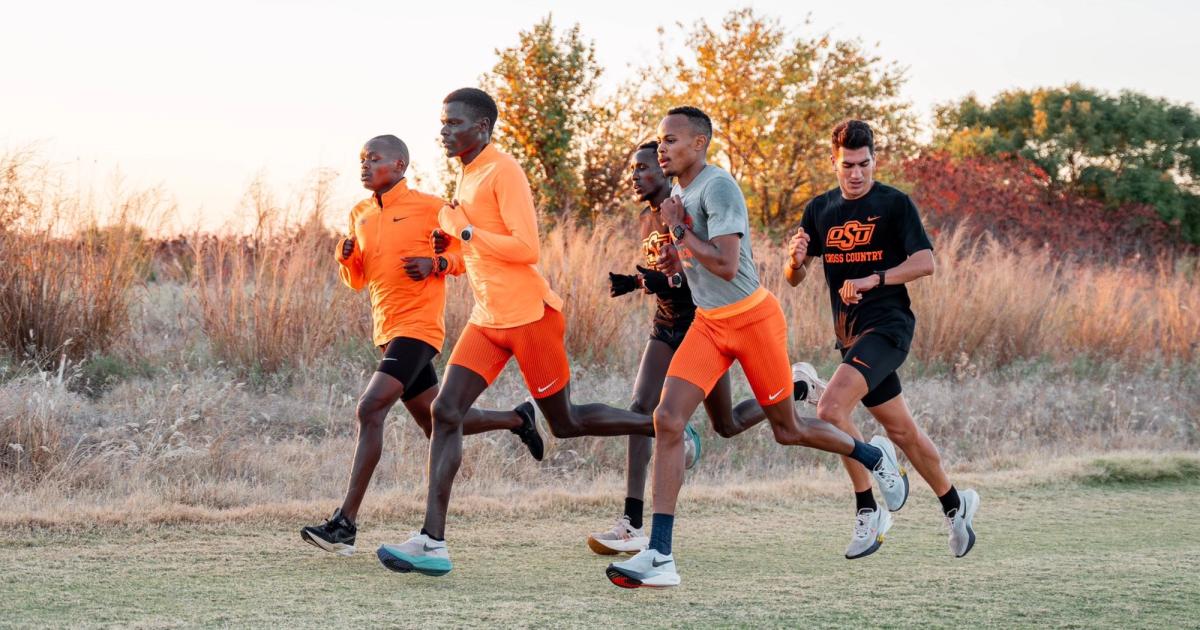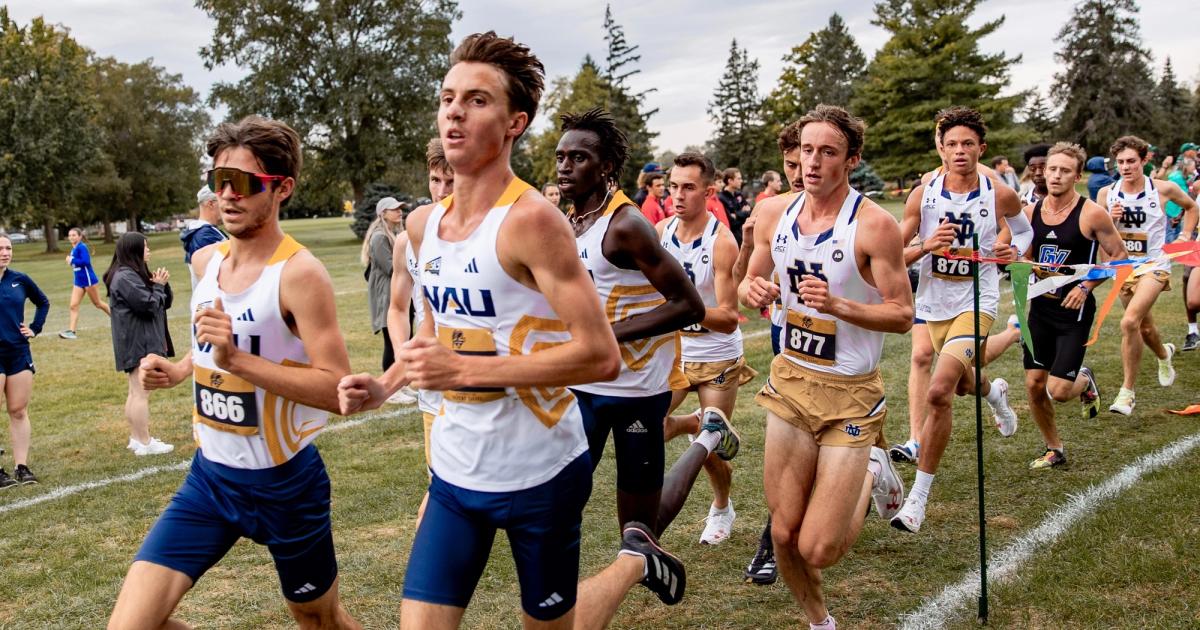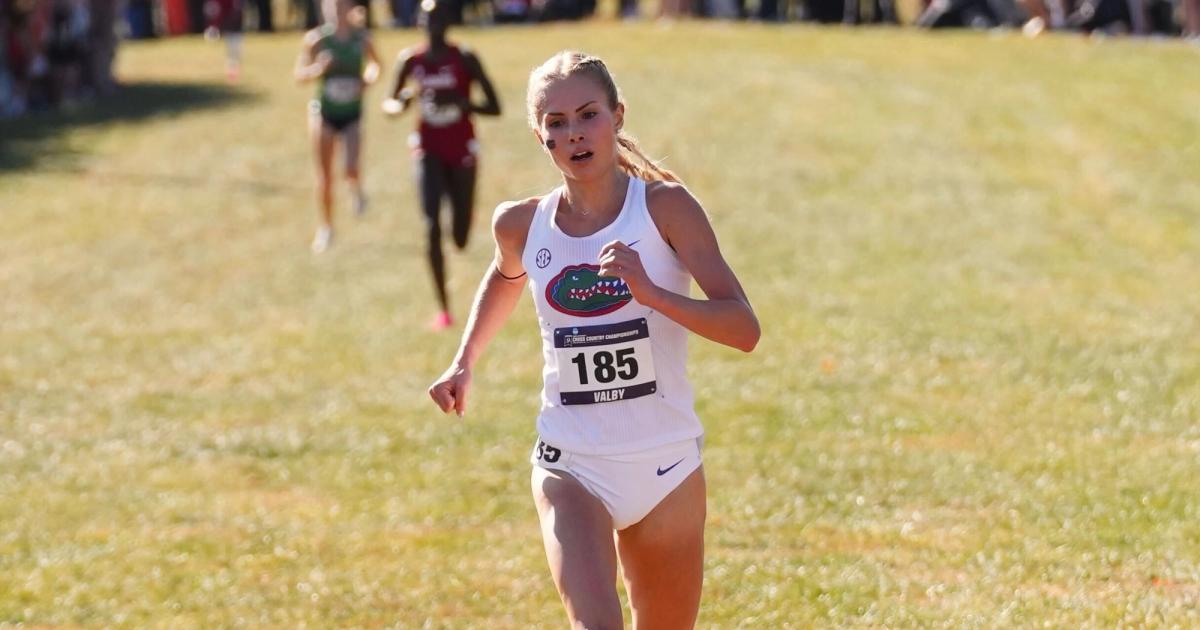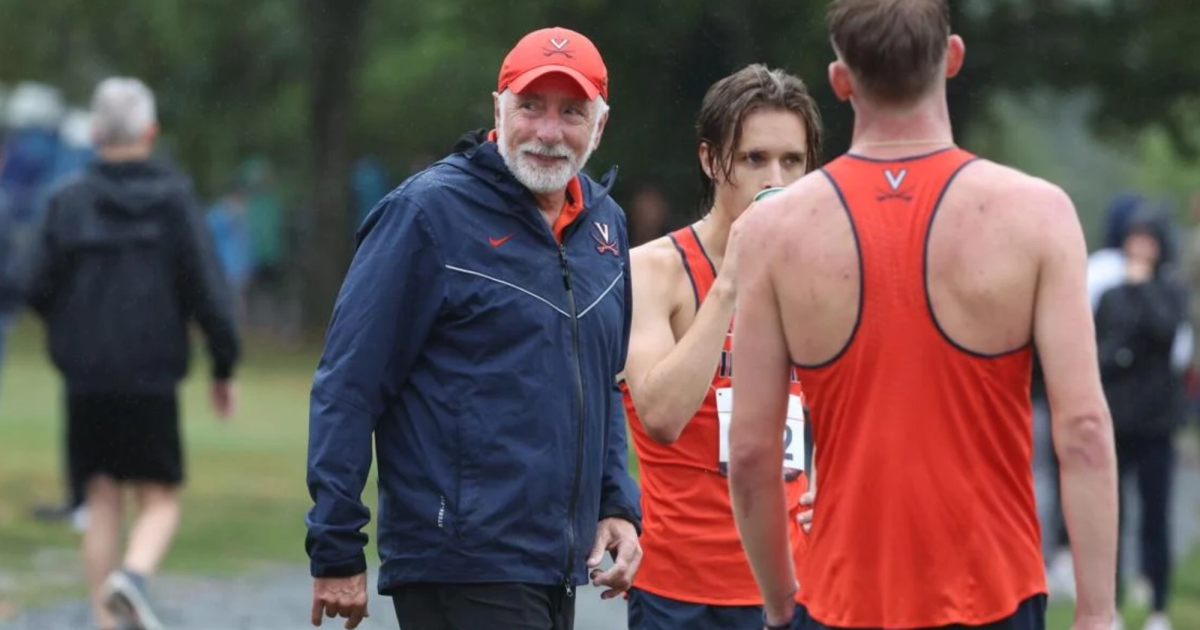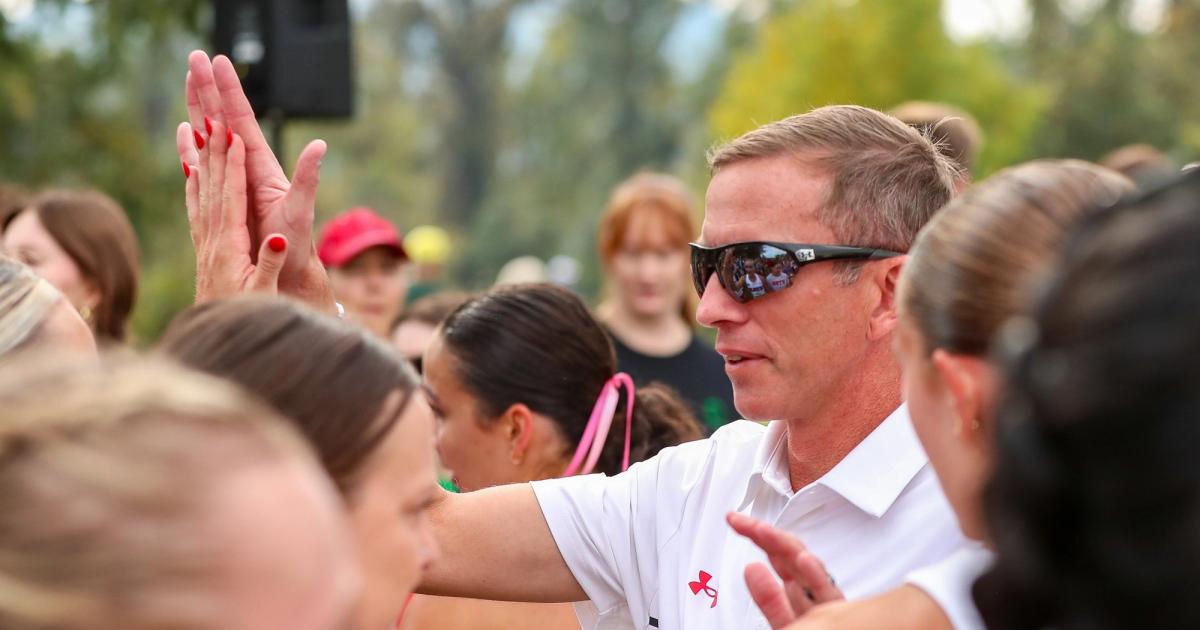By Audrey Allen
November 13, 2024
Say so long to discussions of conference reshuffles, gawking at “8K” times, and speculation over rankings. We’ve reached the penultimate weekend of the NCAA cross country season, which means only one thing: we’re about to witness true championship-style racing at its finest this Friday, November 15th.
As we keep our eyes glued to nine tabs worth of live results pages all day long, here are some of the subplots we’ll be dorking out on.
Who’s playing it cool, and who’s gone cold?
For the country’s top squads, regional meets are merely a box to check on the path to a podium finish. Only a handful of teams – through a combination of talent and fortune with regard to the depth of their region – will have the luxury of resting top runners or instructing them to run a more restrained regional race. But those teams will theoretically have a slight edge when in eight short days they square off in Madison against foes who have a harder effort still weighing down their legs.
Part of the fun of watching regional results roll in is speculating over which upsets are due to strategic maneuvering, and which ones merit smashing the panic button. With individual title threat Doris Lemngole at the helm, a team like Alabama might get beat by a regional rival like Tennessee, only to turn around and vie for a podium spot at nationals when Lemngole turns it on. Or maybe a Tennessee win actually means the Vols are ascendant, and their scant 1-5 spread will hold up at natties…
Life’s not fair, and neither are regional alignments.
Speaking of upsets, a well placed one in one of the more stacked regional meets can have broad sweeping ramifications for at-large team selection. Take the men’s Mountain region, for instance. With just two guaranteed national berths, one team out of BYU, New Mexico, and NAU in both races is going to have to qualify at-large. There’s basically total assurance that – barring calamity – a team of that caliber is selected, based on their resume thus far. But suppose NAU has an off day and slides to fourth behind one of the many other solid teams in the mountain region. Maybe Texas Tech’s low sticks, Solomon Kipchoge and Ernest Cheruiyot, give them the edge in a tightly bunched pack-style race, and they take third. That could push Wyoming – who beat Tech at Joe Piance – into the at-large conversation, and if Colorado State finishes ahead of Wyoming at regionals, we could very realistically see six teams qualify from this region, in this hypothetical!
That’s four fewer at-large bids to go around for the other regions, especially if the favorites perform up to par elsewhere. And if you thought 10,000m rankings were complex, the NCAA selection process makes World Athletics look like Sesame Street.
How much does momentum really matter?
It’s hard to ever call a program like Oregon an underdog, but their comparatively quiet early season had some observers overlooking the Ducks. But after claiming the team title at Big Tens, it’s clear that coach Shalane Flanagan wasn’t showing her cards until now (There’s no bigger flex than using your rust-buster race to claim a title and all-conference honors, like Big Ten champ Şilan Ayyildiz and 11th-place finisher Klaudia Kazimierska did). Oregon now heads into the postseason with more momentum than any other program in the nation, and securing an auto spot at Regionals against the likes of Washington and Stanford would only increase the hype.

Women’s national rankings heading into regionals weekend. (Courtesy Oregon Athletics)
But cross country isn’t necessarily a sport like basketball, where psychologists have validated the existence of the “hot hand.” It’s been two weeks since their last race, and now they’ve got a target on their backs. As team results do tend to regress to the mean over time, it may actually turn out better to be a team like Utah, which has flown under the radar for much of the season but consistently chipped in rock solid showings.
What’s your favorite spread?
It’s always nice when cross country – a team sport! – actually looks like one. The season’s first Goliath vs. Goliath matchup between the BYU and OSU men proved just that, with the Cougar men doing what they do best: pack running, finishing with a tight 10-place spread across their five scorers. Another impressive spread on the cross country charcuterie board came from the Wake Forest men, who claimed the ACC title. They had – pardon the oxymoron – the highest low stick of any Power 4 champ, with Luke Tewalt finishing 7th, but their next four finishers came within the next nine spots, giving the Demon Deacons the win over Stanford. Another potential sign of hope for Wake Forest? Nuttycombe runner-up Rocky Hansen had an off-day and finished 32nd.
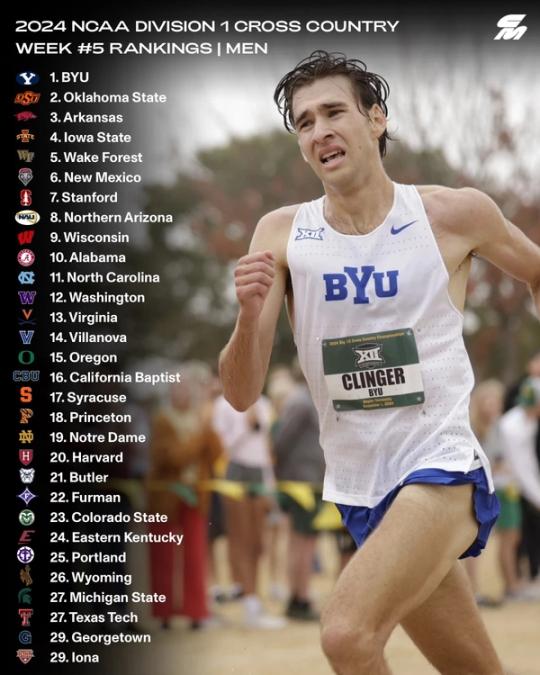
Men’s national rankings heading into regionals weekend. (Courtesy BYU Athletics)
Whether your focus is on sussing out which team performances are 24-carat versus fool’s gold, praying for the chaos of over half the at-large qualifiers coming from two regions, or looking to validate your own personality via a fast-rising team or a steady-performing one, buckle up for 18 top-notch races this Friday.

Audrey Allen
Audrey is a student-athlete at UCLA (Go Bruins!) studying Communications with minors in Professional Writing and Entrepreneurship. When she’s not spiking up for cross country and track, she loves being involved with the media side of the sport. You’ll often find her taking photos from the sidelines or designing graphics on her laptop.
